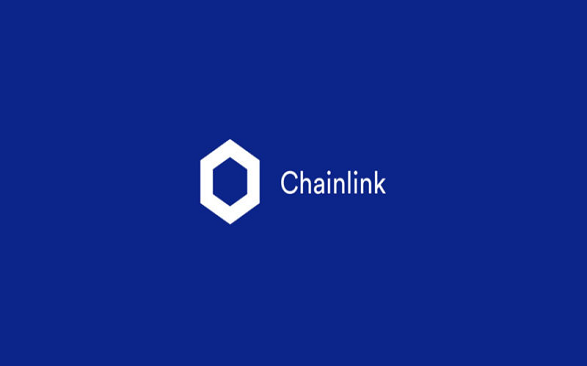Chainlink is one of the most innovative blockchain projects we have today. The project which prides itself as the industry-standard oracle network, is a web3 services platform that enables the connection of the world’s data and systems to blockchains. More so, it is an open-source technology that powers the future of smart contracts.
Given Chainlink’s unique use cases, its adoption by both developers and investors alike continues to surge. Notably, by 15 December 2022, Chainlink achieved an incredible milestone of enabling over $6.9 trillion in transaction value.
Accordingly, LINK, the native token of the smart-contract platform has received high interest from crypto asset buyers, solidifying the crypto asset as one of the top cryptocurrencies in the world today. This growing interest in LINK led to its market capitalization hitting an all-time high value of 21.44 billion dollars in May 2021, according to data retrieved from Coinmarketcap.
Whether you are a seasoned crypto expert or just starting to explore the world of cryptocurrency and blockchain technology, Chainlink has proven to be a project that cannot be ignored. With its ability to bridge the gap between smart contracts and real-world data, the project is seen as a game-changer that will shape the future of decentralized technology.
So join us as we unravel Chainlink. In this article, we discuss what Chainlink is, how it works, its merits and use cases as well as its native token, LINK.
What is Chainlink?
Before we dive into what Chainlink is and how it works, it is important to first understand the concept of blockchain technology in case you are unfamiliar with it.
Blockchain is a decentralized, secure, immutable, and transparent digital ledger that records transactions on multiple computers. It is called a ‘chain’ because it is made up of a series of interconnected blocks, each containing a record of multiple transactions. Once a transaction is recorded on a block, it is very difficult to alter or delete, making blockchain technology a very reliable way of tracking and verifying transactions.
Read More: What are the top 5 blockchain projects you should know?
Now that you have a basic understanding of blockchain technology, let’s talk about Chainlink. According to the team, Chainlink is the industry-standard web3 services platform connecting the world’s data and systems to blockchains.
That is, Chainlink is a blockchain-based open-source platform that enables secure connections of smart contracts with off-chain data and services. Made of decentralized oracle networks, Chainlink can provide tamper-proof inputs, outputs, and computations to support advanced smart contracts on any blockchain.
Smart contracts are self-executing contracts that write the terms of a code agreement. They can be used to automate a variety of processes, from supply chain management to financial transactions. However, the functionality of smart contracts has been limited as they can only access data already stored on the blockchain. In other words, blockchain lacks the functionality to natively procure external data or send data to off-chain systems in a manner that retains end-to-end tamper-resistance.
Chainlink changes all that. By allowing smart contracts to access real-world data and off-chain computation while upholding the security and reliability features of blockchain technology, the industry-standard oracle network, Chainlink, greatly expands the functionalities of smart contracts.
In offering this uncommon solution of connecting highly accurate and available data/APIs to any smart contract, Chainlink employs the concept of decentralization, trusted nodes, premium data, and cryptographic proofs.
How Does Chainlink Work?
Chainlink was created in 2014 but did not launch until 2017. Its founder, Sergey Nazarov, an entrepreneur with a strong presence in the cryptocurrency market, initially designed the protocol as a centralized oracle system that could verify incoming information. However, it has evolved into what it is today – a decentralized network of oracles focused on unlocking the vast potential of hybrid smart contracts.
The Chainlink network consists of several nodes distributed around the world. These nodes are responsible for connecting smart contracts to real-world data and computations such as stock prices, weather data, and shipping tracking information among others.
But how does Chainlink connect these smart contracts to external data sources? The process begins with a user wanting to access external data in a smart contract. They create a data request and send it to the Chainlink network while staking or depositing LINK tokens, the Chainlink network’s native cryptocurrency.
The request is broadcasted to all nodes in the network, one of which responds by providing the requested data. This data is then verified by several other nodes to ensure its accuracy and authenticity, and if it passes the verification process, it is sent back to the user’s smart contract.
What benefits does Chainlink bring to the blockchain ecosystem?
Chainlink Benefits and Use Cases
Among the myriad benefits associated with Chainlink is that it improves the reliability and accuracy of smart contract execution. By connecting smart contracts to external data sources, Chainlink ensures that the data used in those contracts are accurate and up-to-date. This helps reduce the risk of error and ensures contracts are executed as expected.
It also offers flexibility and versatility to smart contracts. The ability to access external data sources allows smart contracts to be used in a wider range of environments. For example, smart contracts could be set up to automatically execute financial transactions based on real-time stock prices, or track the progress of a shipment and automatically execute payments when they reach their destination.
Chainlink offers a wide range of products, solutions, and use cases. Some of its products include; Chainlink Data Feeds, Chainlink Proof of Reserves, Chainlink Verifiable Random Function (VRF), Chainlink Automation, Chainlink, and Cross-Chain Interoperability Protocol (CCIP).
The Chainlink Data Feeds provide secure, reliable, and high-quality market feeds for several sectors including decentralized finance (DeFi), sports, and weather among others. To provide cryptographically secure randomness for blockchain gaming and NFTs, the Chainlink VRF can be used.
Meanwhile, Chainlink Proof of Reserve enables the reliable and timely monitoring of the reserve assets of crypto exchanges or any crypto custody platform. Importantly, the Chainlink Cross-Chain Interoperability Protocol (CCIP) is a product that provides a universal, open standard for developers to build secure services and applications that can send messages, transfer tokens, and initiate actions across multiple networks. With the Chainlink Automation solution, Web3 developers can seamlessly automate key smart contract functions in a decentralized manner.
Furthermore, Chainlink’s groundbreaking solutions also find usefulness in enterprises, insurance companies, and climate markets.
Read More: What are the top 5 blockchain projects you should know?
What is LINK?
Just like every blockchain protocol, Chainlink has its native token dubbed LINK. LINK was created to be used as a medium of exchange and a store of value within the Chainlink ecosystem.
LINK has a maximum supply of 1 billion tokens and a circulating supply of approximately 508 million tokens. LINK’s all-time high was reached on 10 May 2021, when the price peaked at $52.88 as compared to its all-time low of $0.1263 on 23, September 2017, according to Coinmarketcap. At the time of writing, LINK is the 21st-largest crypto by market capitalization ($3.4 billion) and is trading for $6.7 per coin.
Aside from being used as a medium of exchange and a store of value within the Chainlink ecosystem, LINK has several other important functions within the network.
One of the main uses of LINK is to secure the Chainlink network. Oracle nodes responsible for providing reliable data for smart contracts need to deposit collateral in the form of LINK to function on the network. This safeguards and helps ensure the integrity of the data provided by these nodes as they are at risk if a node provides inaccurate or malicious data.
LINK is also used to reward node operators for their services on the Chainlink network. A node operator gets paid in LINK when his node is used to access external data. This ensures that there is a sufficient number of node operators to meet the demand for Oracle services on the network.
Ultimately, LINK is an integral part of the Chainlink network, providing a medium of exchange and incentives for network participants. Its value is influenced by the adoption and usage of the Chainlink network and general market conditions.
Conclusion
Chainlink is a versatile project that plays a key role in the future of blockchain technology. Its ability to connect smart contracts to external data sources reliably and securely opens up a wide range of potential use cases, from supply chain management to financial applications to social impact and climate markets.
While the project certainly has challenges and limitations to overcome, the prospects for Chainlink are on the high side. With its strong team, growing user base, and partnerships with key industry players, Chainlink is well-positioned to drive further adoption of blockchain technology across a variety of sectors.
Read also: Avalanche Blockchain: All You Need to Know
Credit: Ndianabasi Tom
A crypto journalist and content writer who has been talking about cryptocurrency and blockchain technology since 2018, Ndianabasi is a Writer at Crypto Asset Buyer (CAB).
Discover more from Crypto Asset Buyer
Subscribe to get the latest posts sent to your email.




